
Have you had it with too much misting and fertilizing and pruning and watering? Are you watering too much, not watering enough? Or maybe you travel a lot, or you’re busy. Maybe you’re picking out a plant for a friend, and you don’t want to burden them with something too finicky.
I get it; you’re perfectly capable of taking care of plants. You remember to water them now and then, and you make sure they get the right light; you just don’t want to deal with any chlorophyll-laden prima donnas. Yeah, I hear you.
Sometimes taking care of fussy plants is enough to make you want to pitch all of your plants. I mean come on, your friend’s plastic palm doesn’t look that fake, you know if you’re looking at it from across the room.
Don’t sweat it. I’ve got you covered with nine of the most laid back, “I’m just happy to be invited to the party,” plants around.
These plants are minimal fuss. They don’t require any special treatment beyond the occasional watering and the right light. Fertilizer? Nah, we’re good. Fancy soils? No thanks. These are plants that practically look after themselves.
My Top 9 Set It & Forget It Plants
1. ZZ Plant – Zamioculcas
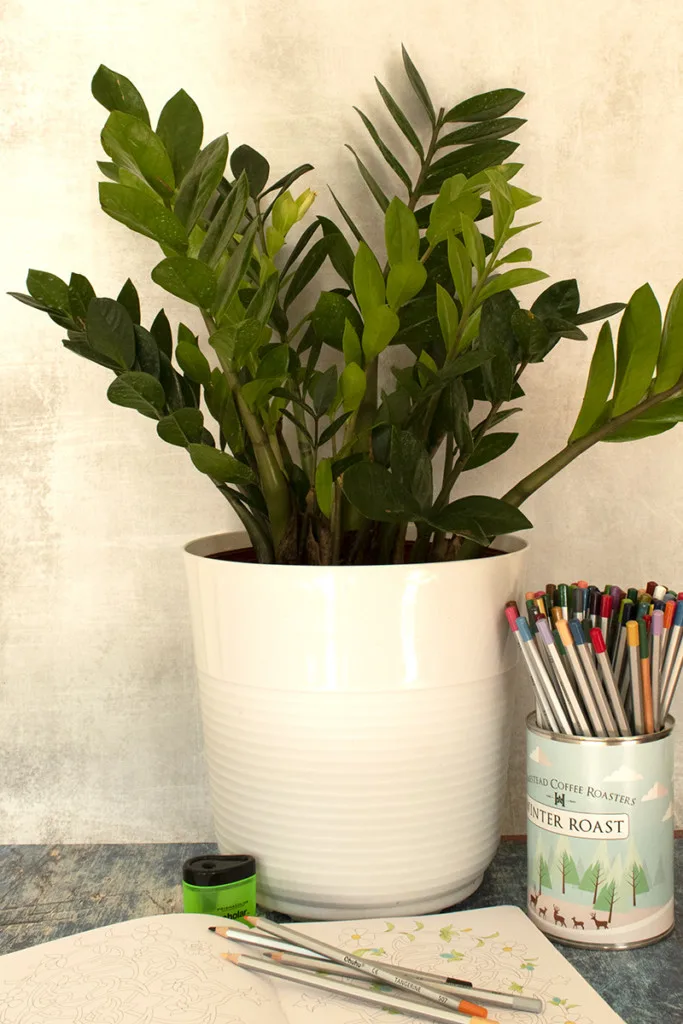
The ZZ plant, which also goes by the exotic name of Zanzibar Gem, is one chill plant. It’s pleasing symmetrical foliage, and beautiful emerald green leaves make it the perfect statement plant in a bare corner. They look good in a pot on the floor or up on a bookshelf.
They’re pretty tolerant of most lighting situations, so you can put them nearly anywhere in the house. Water them when you think of it, and you’ll have a pretty happy ZZ.
2. Snake Plant – Dracaena trifasciata
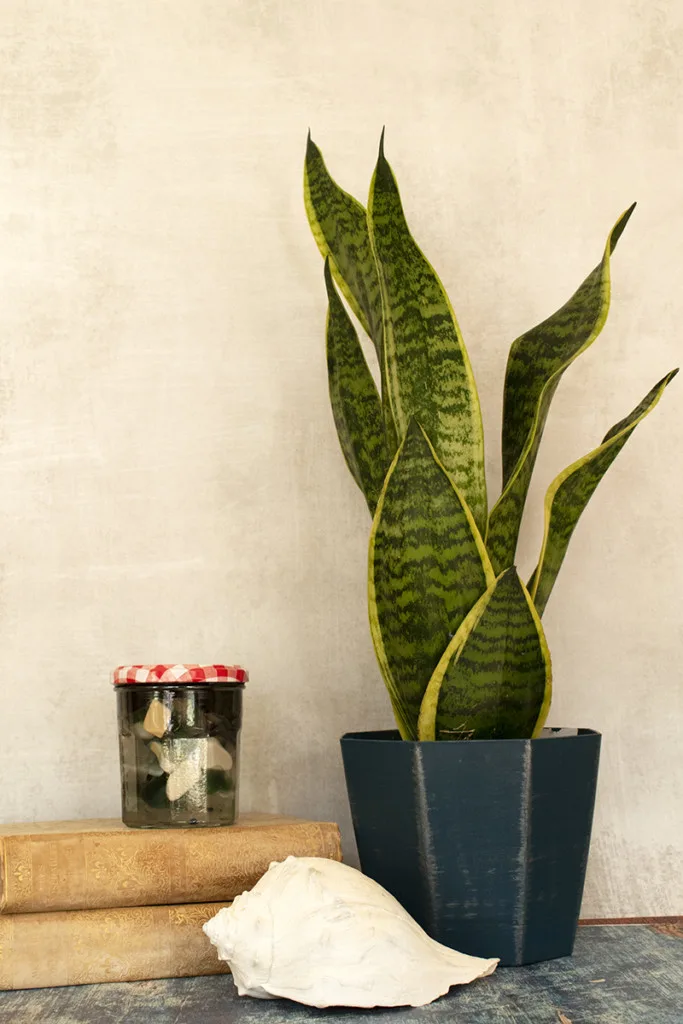
Dracaena trifasciata come in several varieties, from short and broad leaves to long and narrow leaves. There’s even a snake plant that grows lovely round, tapered rod-shaped leaves. There’s a shape that will please everyone.
These plants like to be put in the corner and forgotten. Grab several different varieties and group them together for an interesting focal point in your room.
And it’s okay to let them dry out completely between watering, especially during the winter when they go dormant. They do best with a little neglect. While they prefer bright indirect light, snake plants are pretty adaptable and will do just fine in low light as well. As I said, these guys aren’t picky.
Plus, once you have one snake plant, you can propagate it to grow many new snake plants. Here’s my tutorial for propagating snake plants from leaf cuttings, pups or division.
3. Philodendrons
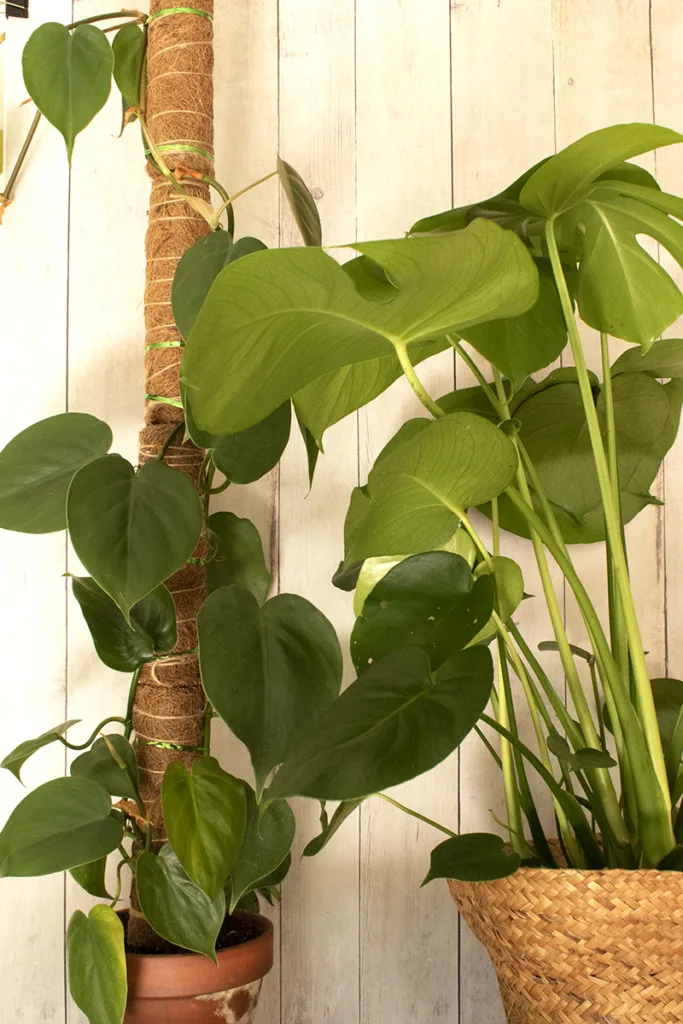
As a species, philodendrons are one of my favorite house plants. Those big, glossy leaves turn any room into a lush green paradise. And it doesn’t hurt that they’re also easy to care for and don’t need a lot to thrive.
Many plant care guides recommend giving philodendrons something to climb, as they do in their natural habitat. But you don’t need to do that if it’s too much fuss. They will happily live out their days in a pot. And if you’re looking for a hanging plant, the heartleaf philodendron is a great option. You get beautiful, large leaves with minimal work on your part.
4. Spider Plant – Chlorophytum comosum
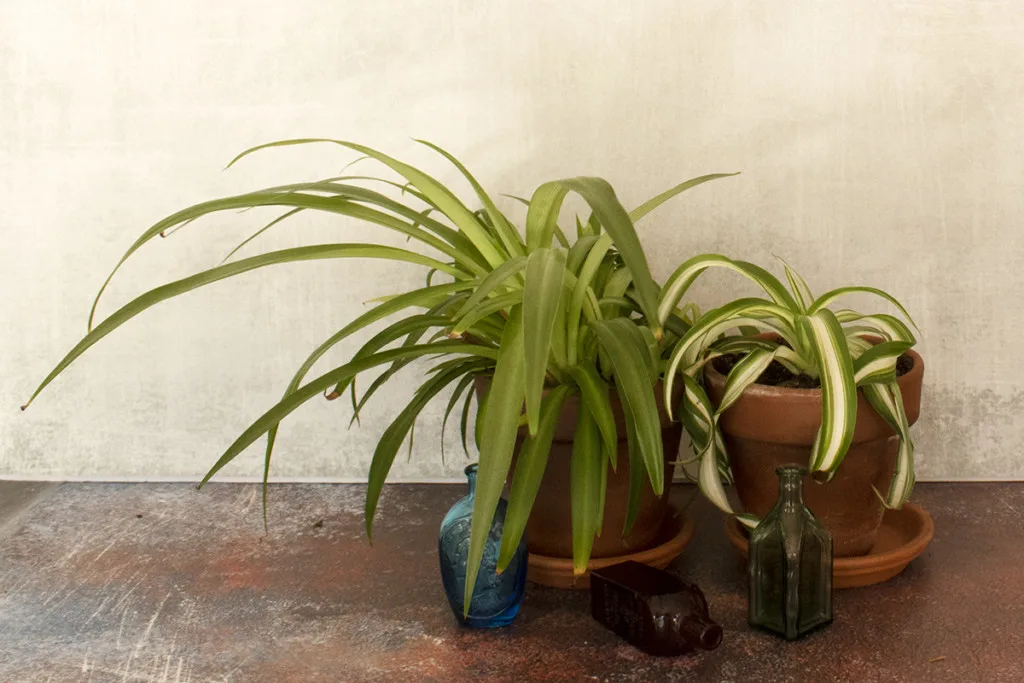
While there’s nothing particularly fancy about spider plants, they make up for it with their ease of care. They practically take care of themselves. It’s why everyone and their grandmother has one. A spider plant is basically ground zero for plant ownership for most folks.
And much like the snake plant, spider plants do well if you let them dry out between watering. And cut back on how often you water them during the colder months. You’ve got to love plants that hibernate, making your job easier.
Spider plants aren’t picky about light either, making them an ideal candidate for nearly every room of your home.
Another benefit of owning these low maintenance plants is that they make propagation super easy. They will often grow little spider plant ‘pups’ that hang down off of the main plant. You can snip these off and poke them in some dirt. Or do absolutely nothing, and they will continue to grow, giving you a fuller plant.
These plants are incredibly easy to propagate too – you can learn how to propagate spider plants with my tutorial here:
How To Propagate Spider Plants – With and Without Spiderettes
5. Kalanchoe
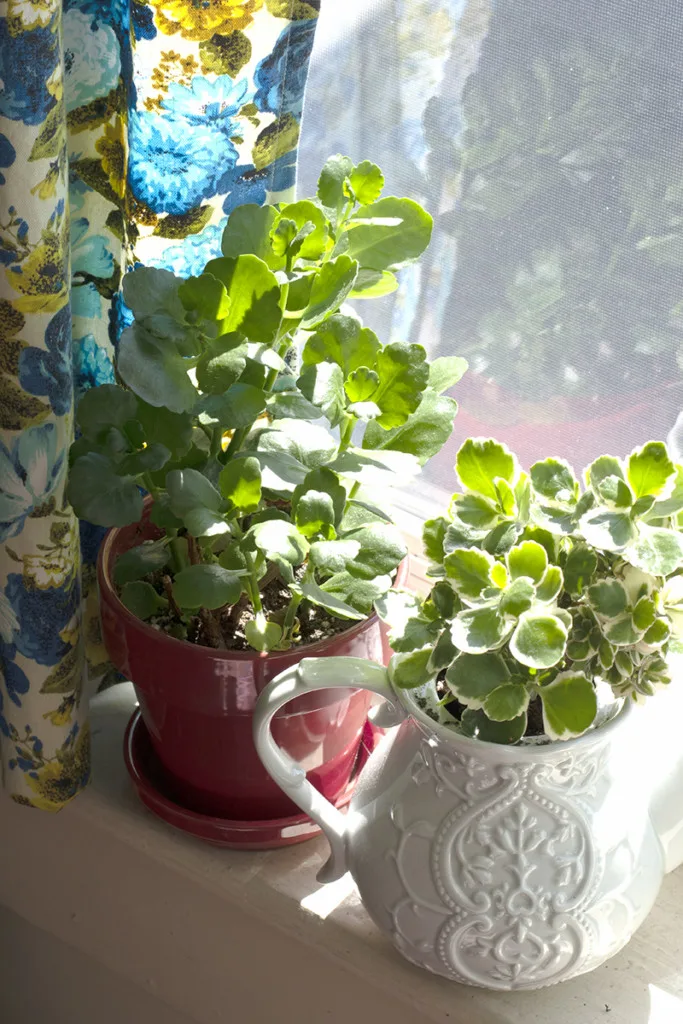
If you like dark, shiny leaves, this plant is your best bet. You’ll often find Kalanchoe in the nurseries around the holidays. They’ll be covered with tiny, brightly colored flowers. Once these main blooms die off, you’re left with a mass of deep, emerald green leaves. They’re thick and fleshy, like most succulents, but are darker in color.
If you’ve got a good sunny spot in your home, it’s just begging for a kalanchoe. These sun-loving plants are happy to be left on their own, soaking up the sun. Water them occasionally, and let them dry out between watering.
They don’t need to be fertilized, and will often produce new flowers each year if left to their own devices.
6. ‘Christmas’ Cactus – Schlumbergera
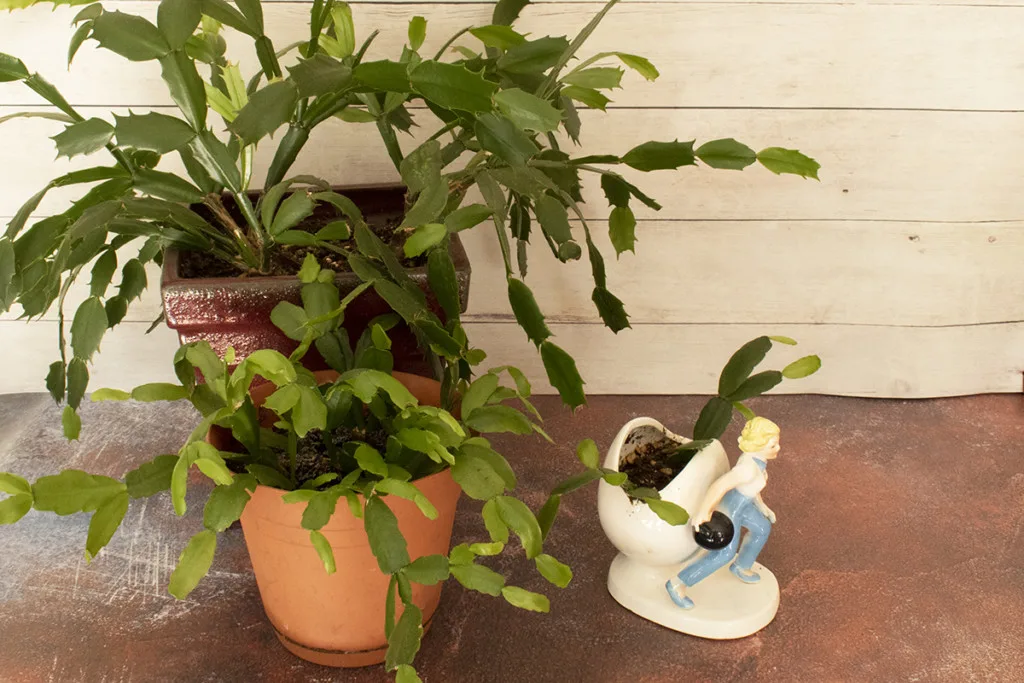
If you want to talk about an easy-going, easy-growing plant, you can’t leave out Schlumbergera. These plants are so laid back they’ll grow on rocks in the wild. “Nah, I’m alright here, thanks.”
And if you decide to buy one here are 10 Things Every Christmas Cactus Owner Needs To Know
Of course, there’s always a lot of confusion over the name Christmas cactus. Most of what is sold in stores these days are actually Thanksgiving cactus. In general, we call them holiday cacti as they’re named for the holiday in which they generally bloom – Christmas, Thanksgiving, or Easter.
And once you know what to look for, they’re pretty easy to tell apart.
Easter cacti have nodes that are wide and oval-shaped with slight indentations. Thanksgiving cacti are toothed and have longer, almost rectangular shaped nodes. And finally, Christmas cacti look nearly identical to Thanksgiving cacti; only they’re indented instead toothed. Check out the picture and see if you can tell which is which. And if you can’t take a look below.
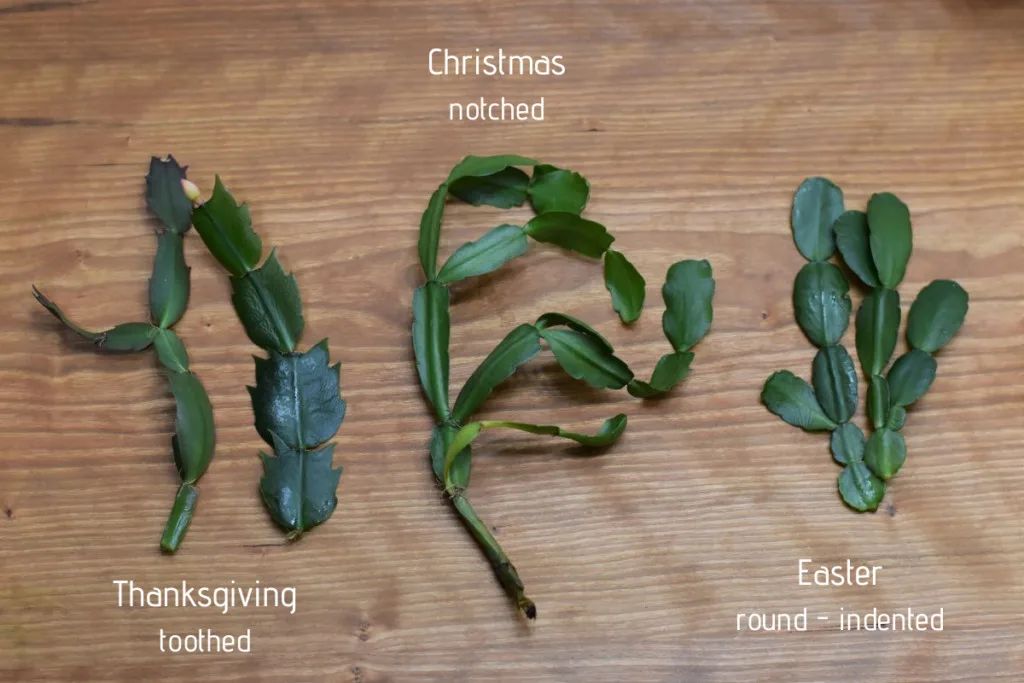
No matter which one you end up with, these fleshy cacti are quite happy to be left alone. In fact, I’ll bet you have at least one elderly relative that has a HUGE holiday cactus. And if you ask them how they care for it, they’ll probably tell you they ignore most of the time.
Related Reading: Christmas Cactus Care: More Blooms, Propagate & Identify Holiday Cacti
Learn how easy it is to make more Christmas cactuses: How to Propagate Christmas Cactus + 2 Secrets To Big, Blooming Plants
And here’s what to do should your Schlumbergera ever require a little extra TLC: Christmas Cactus Not Flowering & 12 More Common Holiday Cactus Problems
7. Wax Plant – Hoya carnosa
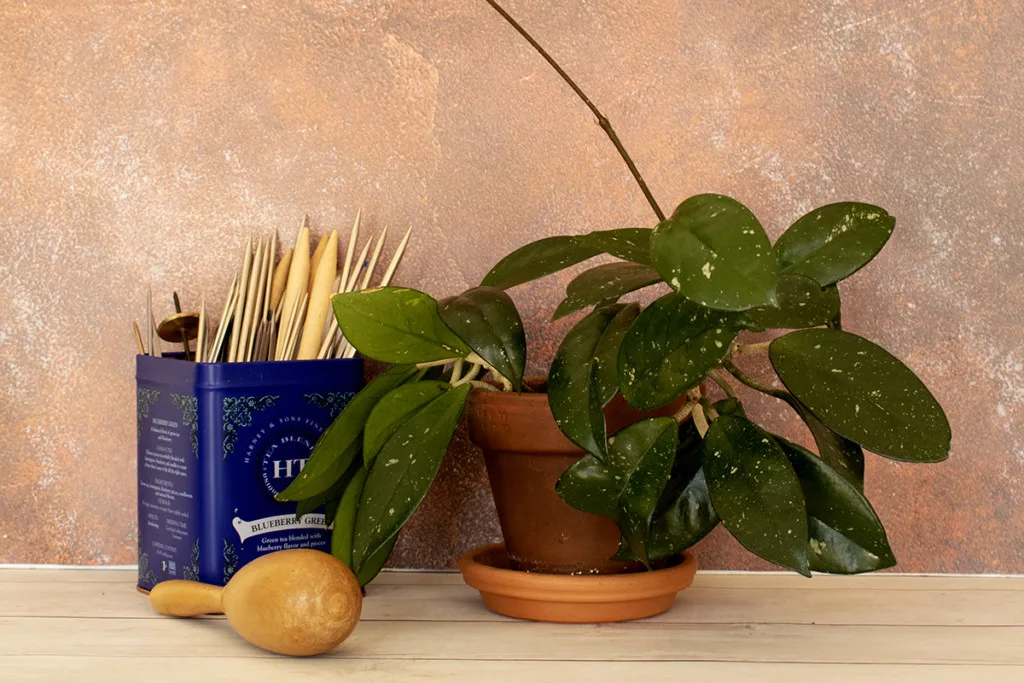
These just might be my favorite low maintenance house plants. The one pictured here was given to me by a dear friend several years ago, it had five leaves on it. It was a piece from her mother’s hoya. My little offspring spent the first year of its life in a plastic cup with dirt, and I forgot to water it quite often. I finally got it into a pot and look at how happy it is.
As you can see, wax plants do alright with a little neglect. And for very minimal care, they will reward you with beautiful glossy leaves and sometimes the most delicate flowers.
Like all the plants on this list, hoyas don’t have a lot of fussy care requirements. They don’t need fertilizer and they aren’t particularly picky about soil. Put them someplace with bright indirect light and let them be.
8. Haworthia
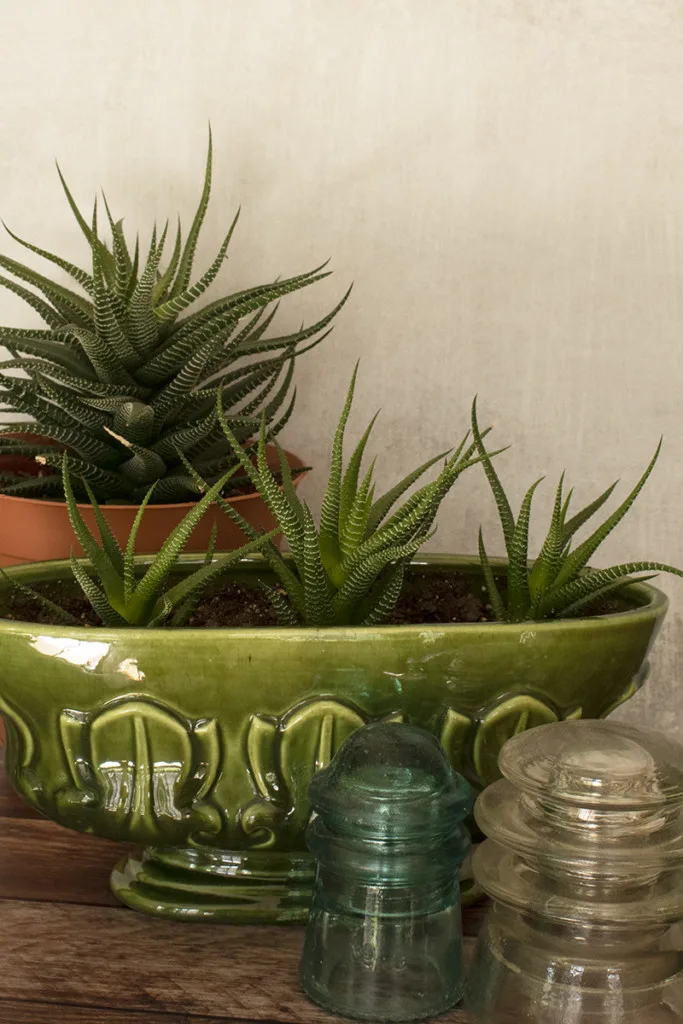
This plant is so low maintenance that I’ll often forget to water it even though I’m watering the other plants around it. It seems the only time I pay attention to it is when it sends out one of its long flower stalks with pretty purple flowers at the end. Almost as if it’s reaching out to say, “Hey, remember me?”
These little succulents make a fun and spiky addition to your desk or on a bookshelf. Put a few around your house in areas where you could use a plant, but are limited on space. Their compact size also makes them perfect for gift giving.
9. Cactus
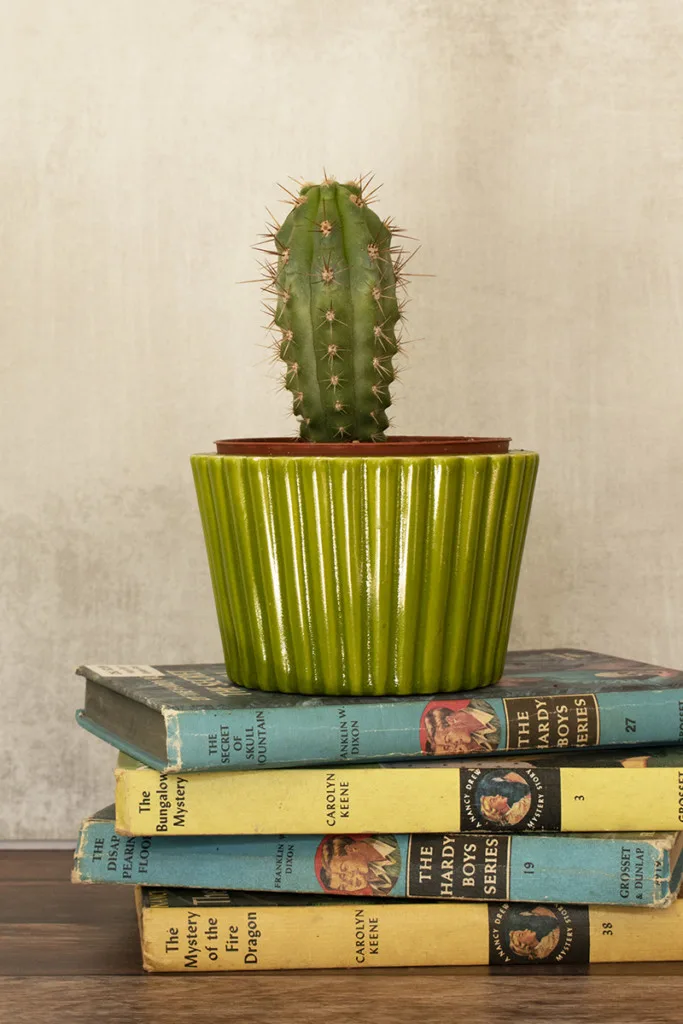
Nothing says, “Nah, I’m good,’ like one of these prickly little plants. Cacti are the ultimate low maintenance house plant. Water them every now and then when you remember and enjoy their prickly little attitudes. They make a great statement on their own, but look amazing if you group several different types together.
Pro-tip – if you’re going to plant several in one container, use salad tongs to remove them from their nursery pots and repot them. While the more obvious spikes hurt, those tiny fuzzy ones are nearly impossible to remove from your skin.
There now, see? You’ve got plenty of plant options even if you aren’t up for fertilizing some finicky flower with organic mushroom compost and misting it’s leaves every three hours. Keeping house plants should be enjoyable, and with these low maintenance options, nearly everyone can find a couple they like.
And if you like easy plants, you’ll want to propagate a few of these: 9 Houseplants That Are Ridiculously Easy to Propagate
If you’re terrified that you’ll kill even these low key plants, check out my list of 8 Hard To Kill Houseplants – The Best Plants For Forgetful Owners.
Or if you’re looking for some weird and wild to grow, check out 15 Rare and Unusual Houseplants to Grow.

Get the famous Rural Sprout newsletter delivered to your inbox.
Including Sunday musings from our editor, Tracey, as well as “What’s Up Wednesday” our roundup of what’s in season and new article updates and alerts.


